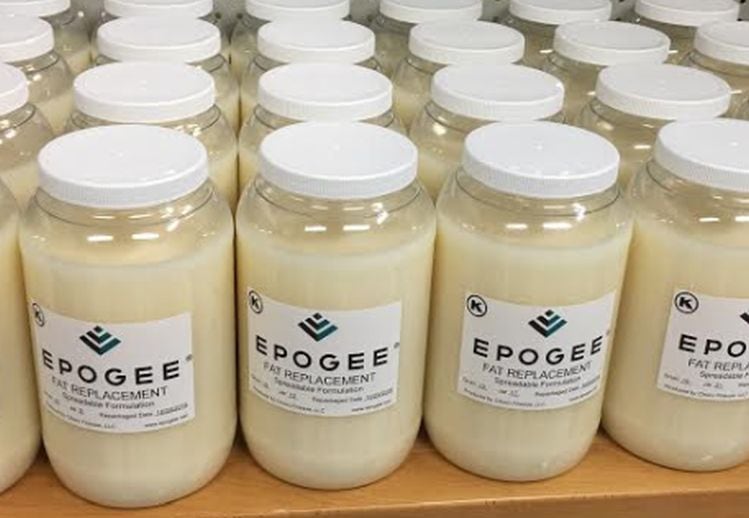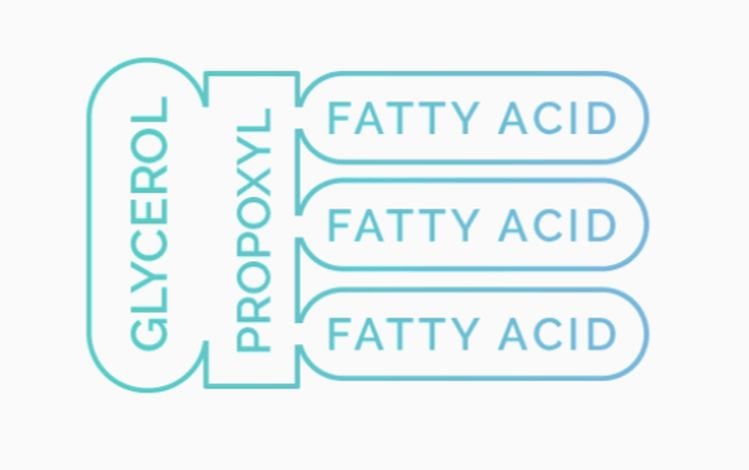Speaking to FoodNavigator-USA after securing $8.3m in a round led by HG Ventures that will help the brand produce commercial quantities this year (initially via toll manufacturers), Epogee CEO John Musselman acknowledged that EPG was not a ‘kitchen cupboard’ ingredient, but said he anticipated significant demand given its "astonishing" properties.
He also noted that unlike some other fat replacers, EPGs are made from fat (Epogee’s first product is from rapeseed oil) that has been restructured in such a way that virtually none of it is absorbed by the body.
'This is not another Olestra'
But before you ask, this is not another Olestra (a hybrid molecule of sucrose esterified with eight fatty acids from Procter & Gamble that attracted a wave of negative PR over its messy side effects... notably anal leakage), stressed chief technology officer David Rowe, adding that Epogee does not cause the same gastrointestinal problems.
"Very early in this process, after seeing P&G's experience, I made the decision that we were not going to sell anything that would be a liquid at body temperature, so our melt point is above body temperature [meaning no oily 'spotting'/anal leakage]."
Moreover, Epogee does not inhibit the absorption of fat-soluble vitamins in the way that Olestra did, he explained: "It has to do with the chemistry, the polarity and the charge. Olestra was like a sponge in terms of the polarity of the molecule, whereas we are much less polar. Olestra was even taking things that were already absorbed, and like a magnet, pulling them back out and excreting them, and as a result of that they had to supplement the vitamins that were being depleted."
Similarly, while EPGs are resistant to lipase (the enzyme that breaks fat down in the body), they are much more readily degraded in wastewater and other environmental settings that have been reported for Olestra.
On a sensory and functional level meanwhile, EPGs are superior to Olestra, and taste and behave like fats in food, claimed Musselman. “A lot of the comments about Olestra was that it had an odd flavor note, aside from the gastrointestinal issues. EPGs look, taste, and perform like fat.”
EPGs effectively allow manufacturers to have their cake and eat it, allow food marketers to minimize calories and maximize taste, said Rowe.
EPGs are a family of fat- and oil-like substances that resemble triglycerides in structure and appearance, but have been modified to prevent or limit their digestion when consumed in food, says Epogee.
Is 2019 the right time to launch a fat replacer?
But what about the timing? While fat reduction and replacement might have been all the rage in the 80s and 90s, aren’t consumers today – some of whom are actively embracing high fat keto diets - more worried about sugar, and increasingly suspicious of ingredients they can’t pronounce or find in their kitchen cupboards at home?
Some consumers and brands may be wary of EPGs - which would likely be listed as ‘EPG (fat replacer)’ on US food labels - conceded Musselman, but noted that consumers have a somewhat schizophrenic attitude towards technology these days (you can’t make an Impossible Burger in your kitchen either).
“This is a new tool in the toolkit that's maybe not for every brand and every consumer, but when you show people donuts, tortilla chips, frosting and they see what is possible from a calorie reduction viewpoint, they are amazed at the taste. You can produce ice cream that has the calorie count of light ice cream but the flavor and experience of Häagen-Dazs.”

Getting real
While the food culture has definitely changed over the past 30 years, the fact remains that most Americans are consuming more calories than they are burning off, and many of them come from fat, Rowe added.
While some people have argued that "you're just enabling people to eat more crap," he said - an argument that could equally be made about everything from stevia to chicory root fiber, the reality is that people are not going to stop eating ice cream, confectionery, icing and other products, and Epogee means that they will deliver far fewer calories.
"We believe Epogee represents an important piece of the puzzle of 'how do you produce the foods that consumers want to eat, while sharply lowering the adverse impact of those consumption choices?' I'm not aware of any other technology (pharmacological, food ingredient, processing, etc), that has better effectiveness, versatility, and safety."
"Epogee has developed an incredible product that has the potential to dramatically change the food industry.”
Kip Frey, Managing Partner, HG Ventures
Nutrition Facts panel
So how would 10g of EPG be reflected on the Nutrition Facts panel?
10g of fat normally contains 90 calories (fat has 9 kcals/gram), but 10 grams of Epogee contains just 7 calories and 0.8g fat (which would be rounded up to 1g on food labels), Rowe explained.

How are EPGs produced? According to a GRAS notice submitted to the FDA in 2015, esterified propoxylated glycerols (EPGs) are produced by a three-step process: First, fats and oils are split into glycerol and fatty acids. Next, glycerol is reacted with propylene oxide to produce glycerol with propylene glycol units (PGUs) inserted on its hydroxyl groups.
Finally, the propylene glycol-substituted glycerol is reacted with fatty acids to produce EPG, which largely resists digestion because the PGUs prevent the digestive enzyme lipase from breaking down the fat.
According to the rat studies described in the 2015 GRAS notice: “Ingested EPG is not absorbed or metabolized to any significant degree. The results of rat studies with radiolabeled EPG showed poor absorption from the gastrointestinal tract. About 70-80% of an oral dose was recovered in the feces, 1 0-20% in the urine, and the remaining fraction was recovered in expired air, presumably as carbon dioxide; no accumulation in tissues has been observed.”
The long and winding road to commercialization
The road to commercialization has been lengthy for EPGs, which were first developed in the 1980s by ARCO Chemical Company, which teamed up with Bestfoods to explore their potential as fat replacers in foods.
However, Bestfoods withdrew from the joint venture shortly thereafter, and work did not resume until late 2003 when the technology was assigned to a non-profit affiliated with Kansas State University. A new partner, Choco Finesse, LLC, was later granted development rights and has recently changed its name to Epogee.

Safety: EPGs are generally recognized as safe (GRAS) for multiple food applications

The FDA says it has no questions regarding the GRAS status of EPGs for multiple food applications including confectionery products, frying, baked goods and baking mixes, frozen desserts and mixes, nut products (including peanut butter), grain products, pasta, granola and snack bars, sauces and gravies, and soft candy.
EPGs have been evaluated for safety at levels as high as 150 grams per day, almost twice as much as consumed in a typical US diet of 2,500 calories per day.

